Our Take
Astrodon narrowband filters are some of the best on the market. The build quality of the filters, combined with the excellent emission wavelength transmittance and out-of-band blocking make these filters our preferred choice for CCD imaging filters.
Astrodon Narrowband filters set a new bar of performance and durability for imaging and research. The narrow 5 and 3 nm bandwidths enhance contrast of emission targets by lowering your background signal. The guaranteed >90% transmittance at the emission wavelength provides you with the highest signal available. This guaranty is expensive to manufacture for such spectrally narrow filters, but it assures you in writing on each filter box that you will get what you paid for. These two factors combine to provide you with the highest contrast available. Our latest Narrowband filters are in fact achieving >95% transmittance. Astrodon Narrowband filters are renowned for minimizing halos around bright stars, even for long exposures typical of narrowband imaging in astrophotography. Lastly, Astrodon Narrowband filters are coated to the edge of the part and are edge blackened. This is critical to minimize stray light for a filter that blocks most light except for the narrow bandpass.
Astrodon Narrowband filters for imaging are all about contrast. What do we mean by this? Contrast brings out faint features by reducing the background - the narrower the filter, the better. The problem is keeping the signal (%T at the emission line) constant as the filter becomes spectrally narrower. This is why our >90%T guarantee is so important, even though it becomes very costly to manufacture. But, this assures you that you can take advantage of the improved contrast with our narrower filters compared to the much less expensive 7- 8.5 nm filters on the market. You can see the increase in contrast in the sequence of images of the Crescent Nebula (NGC 6888) taken on the same system and on the same night. As the bandwidth becomes narrower, the nebula "pops" out of the background, as does the faint surrounding nebulosity. Random tests of a competitor's 7 nm H-a filter showed %T values ranging from 86% down to 71%. Therefore, you always know what you are getting with Astrodon Narrowband filters.
Astrodon Narrowband filters currently are provided off-the-shelf for:
- Sulphur SII 671.6 nm 5 and 3 nm
- Hydrogen-alpha H-a 656.3 nm 5 and 3 nm
- Nitrogen NII 658.4 nm 3 nm only
- Red Continuum RedCon 645 nm 5 nm only
- Oxygen OIII 500.7 nm 5 and 3 nm
- Other emission lines, bandwidths and sizes upon request
When we refer to bandwidth, we are referring to the spectral width of the transmission region at 50% of the peak transmittance (FWHM - full width at half maximum).
Check out Astrodon's detailed Narrowband FAQ (Frequently Asked Questions). It covers issues such as: what is a narrowband filter, filter selection guidelines, contrast, bandwidth, out-of-band blocking, fast optics, effect of moonlight, separation of NII and H-a, etc.
Astrodon narrowband filters:
- Come in 1.25" mounted, mounted in 31 mm rings (for QSI), 36 mm unmounted, 49.7 mm diameter and square unmounted sizes
- 3 +/- 0.025 mm thick (5 nm); 3+/-0.05 mm thick (3 nm) substrate prior to coating
- Parfocal with all other Astrodon filters (depending upon telescope optics)
- Peak transmittance guaranteed >90% at the emission line (93-97%T typical) for systems slower than about f/5.
- Steep spectral profile
- >4 OD (out of band blocking) 300 - 1150 nm
- Single, striae-free 1/4 wave fused silica substrate
- 30 arcsecond parallelism
- Durable hard-oxide sputtered coatings with a 5-year limited warranty against delamination
- All filters are coated to the edge and edge-blackened to minimize stray light contamination that can come though the uncoated "rim" in other brands
- 3 and 5 nm bandwidths good to f/5 with little %T loss
- 3 nm can be used to f/3 with ~10-15% loss so you do not have to buy a special "upshifted" filter

Buy risk-free: When it’s time to trade up you’ll get the most value for your used gear.




 In Stock
In Stock
